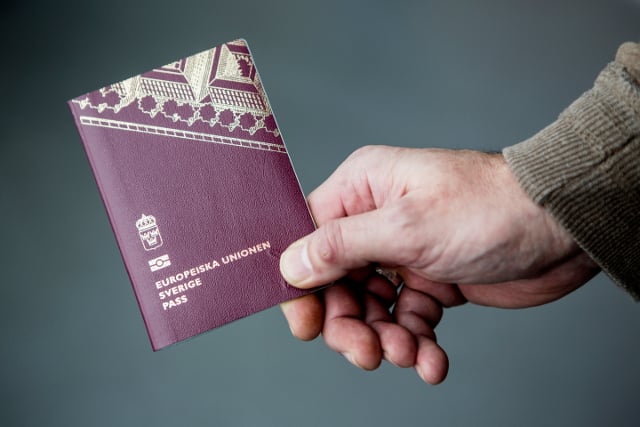A total of 1,082 British nationals applied for Swedish citizenship between the Brexit referendum on June 23rd and December 12th, according to figures provided by the Migration Agency to The Local, more than twice as many as last year.
Of those, 507 Brits have had their applications approved, 14 have had theirs rejected and eight applications have been written off for other reasons. This leaves in total 553 people who are still waiting to find out whether or not they may become Swedish citizens, and some of them may have to wait over a year.
Stephen, 34, who works in human resources for a multinational company in Stockholm and asked us not to publish his full name, is one of them. He applied for dual citizenship at the end of July.
“I have two small boys and straight after the Brexit vote I realized that I could be in a situation where I have to get a Visa to stay in the country to be with my family and that the freedom we enjoy now, with the EU, could be severely restricted,” he told The Local.
Stephen is a British national who has been living and working in Sweden since 2009. EU citizens who have lived in Sweden for at least five years – or who have lived here three years, two years of which with a Swedish citizen – are eligible for Swedish citizenship.
“To be honest, I probably would have applied anyway even if Brexit hadn't happened. I feel at home in Sweden, making my contributions, learning the language and integrating,” he said.
When he contacted the Migration Agency this month to ask how his application was progressing, he was told that they were currently processing applications from September 2015 and that he should expect a wait of around 17-19 months from the date he applied.
“The waiting time for a decision in migration citizenship cases is currently 2-5 months for cases that do not need to be investigated and 17-19 months for applications that do need to be investigated,” Annette Grafen Silander of the Migration Agency's citizenship unit explained to The Local, adding that this includes investigating even seemingly simple and straightforward details.
Meanwhile, some applicants receive responses on a much shorter time scale.
Simon Linter, a writer in Stockholm, applied for Swedish citizenship immediately after the referendum. The Migration Agency's website warned him at the time that he could end up waiting up to 18 months.
“A friend of mine who applied way before the referendum said it took her ten months, so I prepared myself for a wait,” he told The Local. “My UK passport was (and still is) due to run out in January next year, so I faced being without a passport if it took as long as 10-18 months.”
“After two months I got sent the piece of paper with my citizenship confirmed, so I applied for a Swedish passport, which took a day to process after I had filled in the form. I found the process really easy, encountered no problems, and have been impressed at the speed of the passport application.”
Sweden has not yet confirmed how it expects to treat the status of British citizens who do not hold Swedish passports once their country quits the EU. A justice ministry spokesperson told The Local shortly after the referendum that a decision would likely not be made until the UK formally asks to leave the union.
And for Brits such as Stephen, it is an uneasy wait, although he describes himself as “frustrated with the lack of information” rather than worried. “For me it is a formality, the process should be simple, but it isn't. It seems more complicated and lengthy than it has to be,” he said.
But when asked what he would do if forced to choose between his country of birth and his adopted country, he is not sure.
“It's a big question mark, I don't want to be put in that situation. I've been here seven years, but to ask someone to take away the past 27 years of their lives, that's a big thing to ask. I want dual citizenship, because I feel like a citizen of both Britain and Sweden.”
For Linter, he too is concerned about the future, but is reassured by his Swedish passport.
“I still feel that Swedish citizenship was worth getting because of the uncertainty,” he said. “I also feel that I should have applied for Swedish citizenship anyway as I have lived in Sweden since 2003 and it feels like my home. There are certain people back in the UK that I feel see me as a traitor for doing so, but that's their problem, not mine.”
Long waiting times at the Migration Agency not only affect Brits in the citizenship queue, but also asylum seekers, work permit applicants and those hoping to get residency because of family ties to Sweden.
The interim head of the work permit unit in Stockholm, which has hired more staff to deal with the workload, told The Local in November that he expects waiting times to start going down in 2017.




 Please whitelist us to continue reading.
Please whitelist us to continue reading.